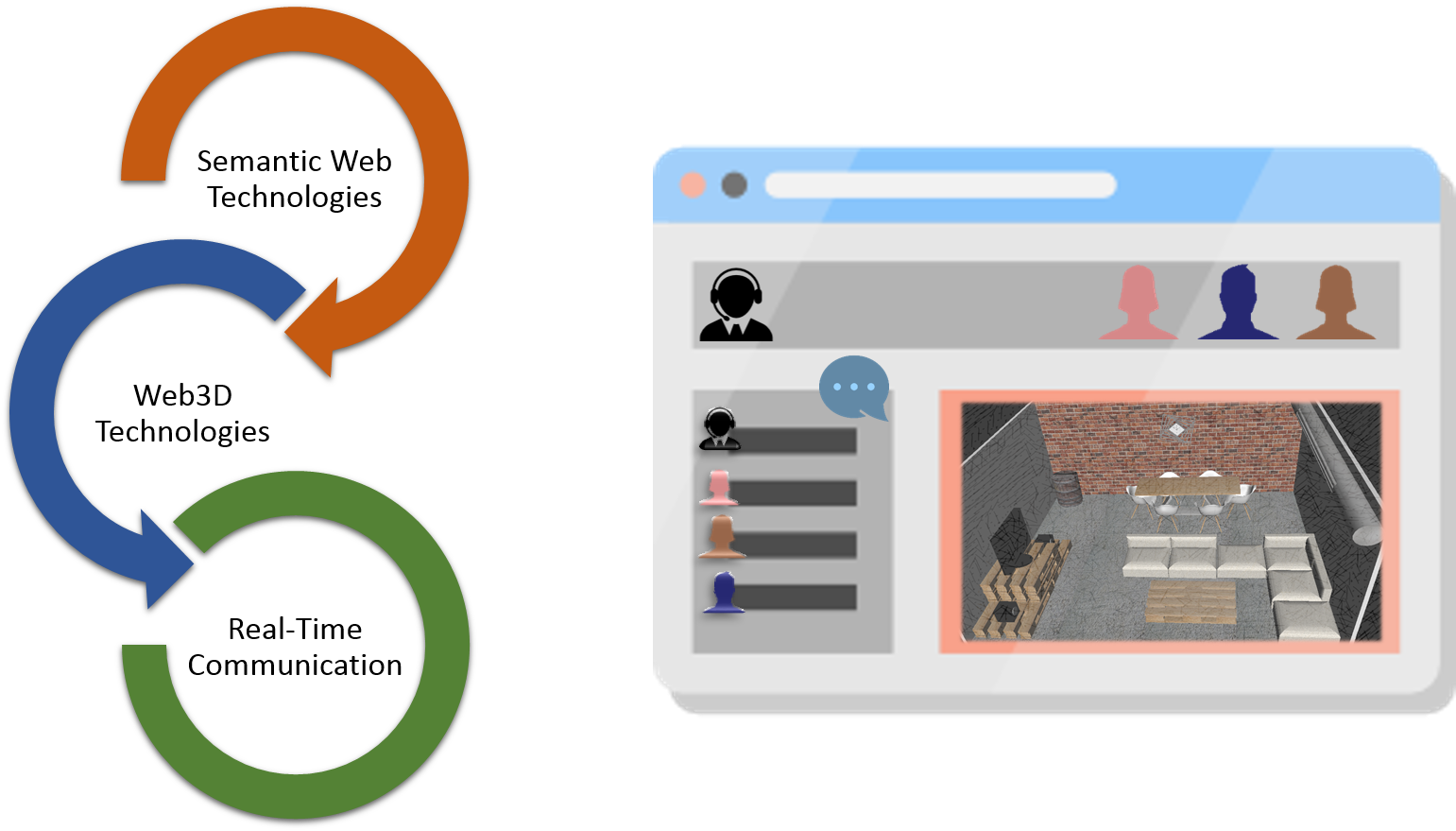Real-Time Collaborative environment for interior design
Technologies

Web Real-Time Communications (WebRTC)
The Web Real-Time Communications (WebRTC) standard increases the multimedia capabilities of
today’s browsers by providing an API for the direct real time communication between two or
more computers. This interaction takes place in users’ web browser without the use of extra
plugins, making easy to share data and multimedia (video and audio). WebRTC is a standard
which was developed by the World Wide Web Consortium (W3C) and the Internet Engineering Task
Force (IETF) as a free, open source project, that aims not only to enrich current browsers,
but also the mobile applications with the functionalities provided by the Real-Time
Communications APIs.
MCU (Multipoint Control Unit or Multipoint Conference Unit)
The vigorous network topology for conference communications is the MCU (Multipoint Control
Unit or Multipoint Conference Unit). MCU is used as a bridge. It is a server which is used
when big number of participants want to connect to a single session and distribute multiplexed
media content to each other. Whenever a participant (peer) decides to leave the specified
conference, the MCU simply terminates this connection. A MCU can handle different codecs
and resolutions to enable the interoperability between the participants.
X3DOM
X3DOM is able to incorporate 3D content on the Web without the installation of plugins, while
at the same time, it provides an efficient integration mechanism for the current Web standards.
Furthermore, its novelty lies to the merging of HTML5 and X3D standards through a viable framework,
which is supported by the majority of today’s browsers.
Web Ontology Language (OWL)
The Web Ontology Language (OWL) is a language specially made for the Semantic Web, in order to
sufficiently describe concepts stemming from a specific domain and organize them in a hierarchical
manner. This organization takes place in such a way that primarily aids computer software to
understand these concepts, rather than presenting this information to humans.
SPARQL (SPARQL Protocol and RDF Query Language)
SPARQL is a Semantic Web standard and the most widely used query language for RDF datasets.
Its latest protocol provides improved performance and advanced retrieval capabilities, thanks
to a set of unique features like SPARQL algebra, custom filter functions, aggregation, various
storage systems support, etc.